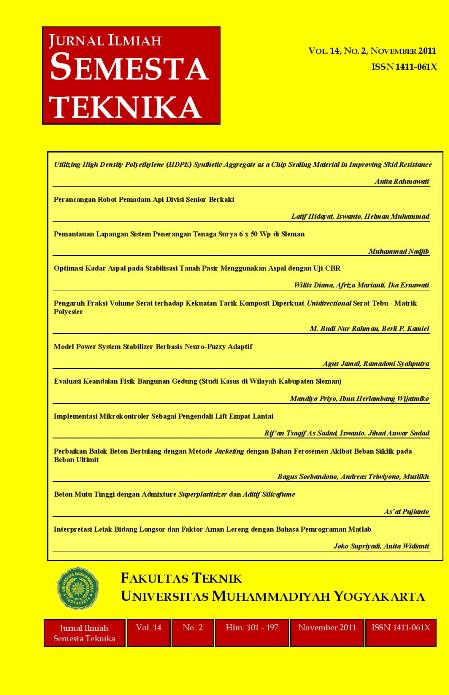Model Power System Stabilizer Berbasis Neuro-Fuzzy Adaptif
DOI:
https://doi.org/10.18196/st.v14i2.543Abstract
Low frequency oscillations are detrimental to the goals of maximum power transfer and optimal power system security. A contemporary solution to this problem is the addition of power system stabilizers (PSS) to the automatic voltage regulators on the generators in the power system. For large scale power systems comprising of many interconnected machines, the PSS parameter tuning is a complex exercise due to the presence of several poorly damped modes of oscillation. The problem is further being complicated by continuous variation in power system operating conditions. This research proposes the PSS model based on adaptive neuro-fuzzy for designing robust power system stabilizers for a multi machine system. Simulations were carried out using several fault tests at transmission line on a Two-Area Multimachine Power System. Simulation is done by using Matlab-Simulink software. The result shows that power transfer response using the model is more robust than Delta w PSS, especially for single phase to ground fault.
Downloads
Published
How to Cite
Issue
Section
License
Semesta Teknika is licensed under a Creative Commons Attribution 4.0 International License.
Authors who publish with this journal agree to the following terms:
- Authors retain copyright and grant the journal right of first publication with the work simultaneously licensed under a Creative Commons Attribution License that allows others to share the work with an acknowledgement of the work's authorship and initial publication in this journal.
- Authors are able to enter into separate, additional contractual arrangements for the non-exclusive distribution of the journal's published version of the work (e.g., post it to an institutional repository or publish it in a book), with an acknowledgement of its initial publication in this journal.
- Authors are permitted and encouraged to post their work online (e.g., in institutional repositories or on their website) prior to and during the submission process, as it can lead to productive exchanges, as well as earlier and greater citation of published work (See The Effect of Open Access).









